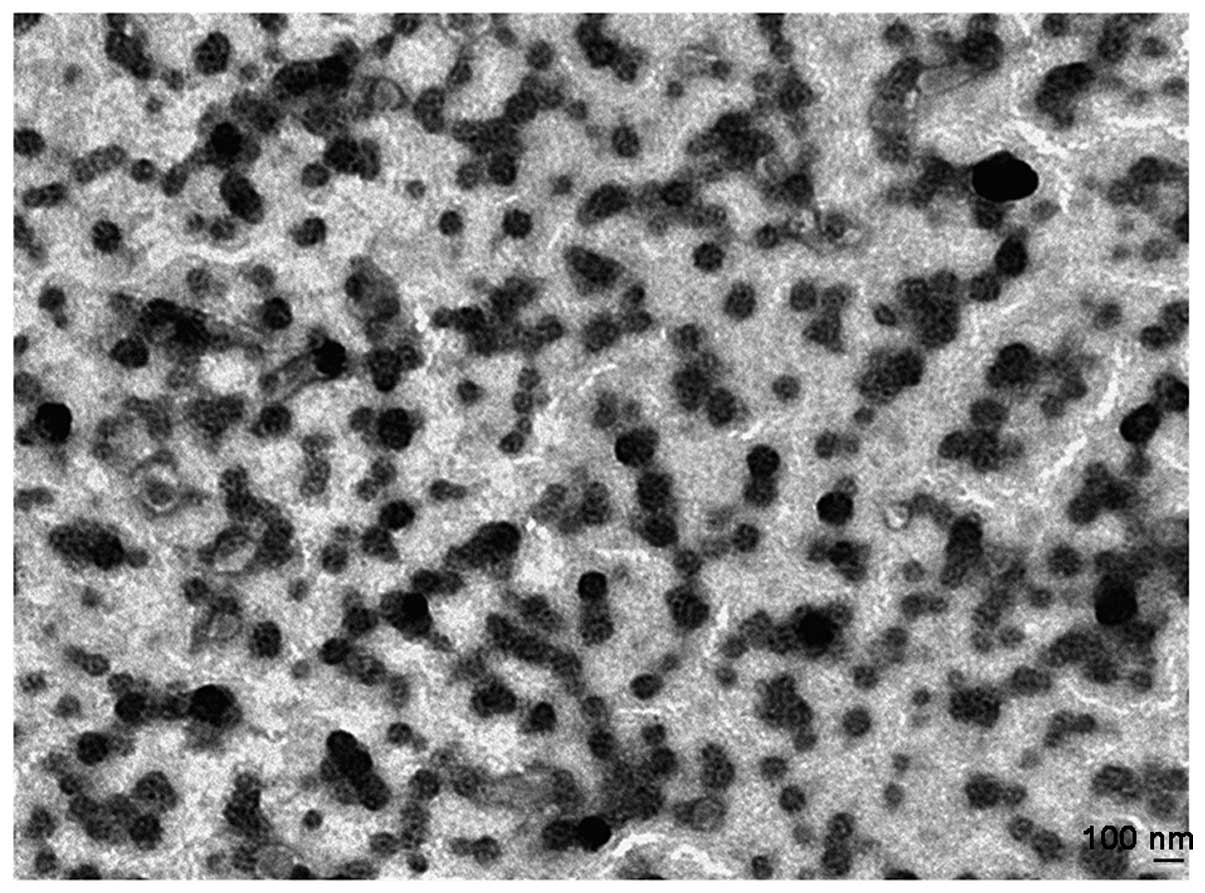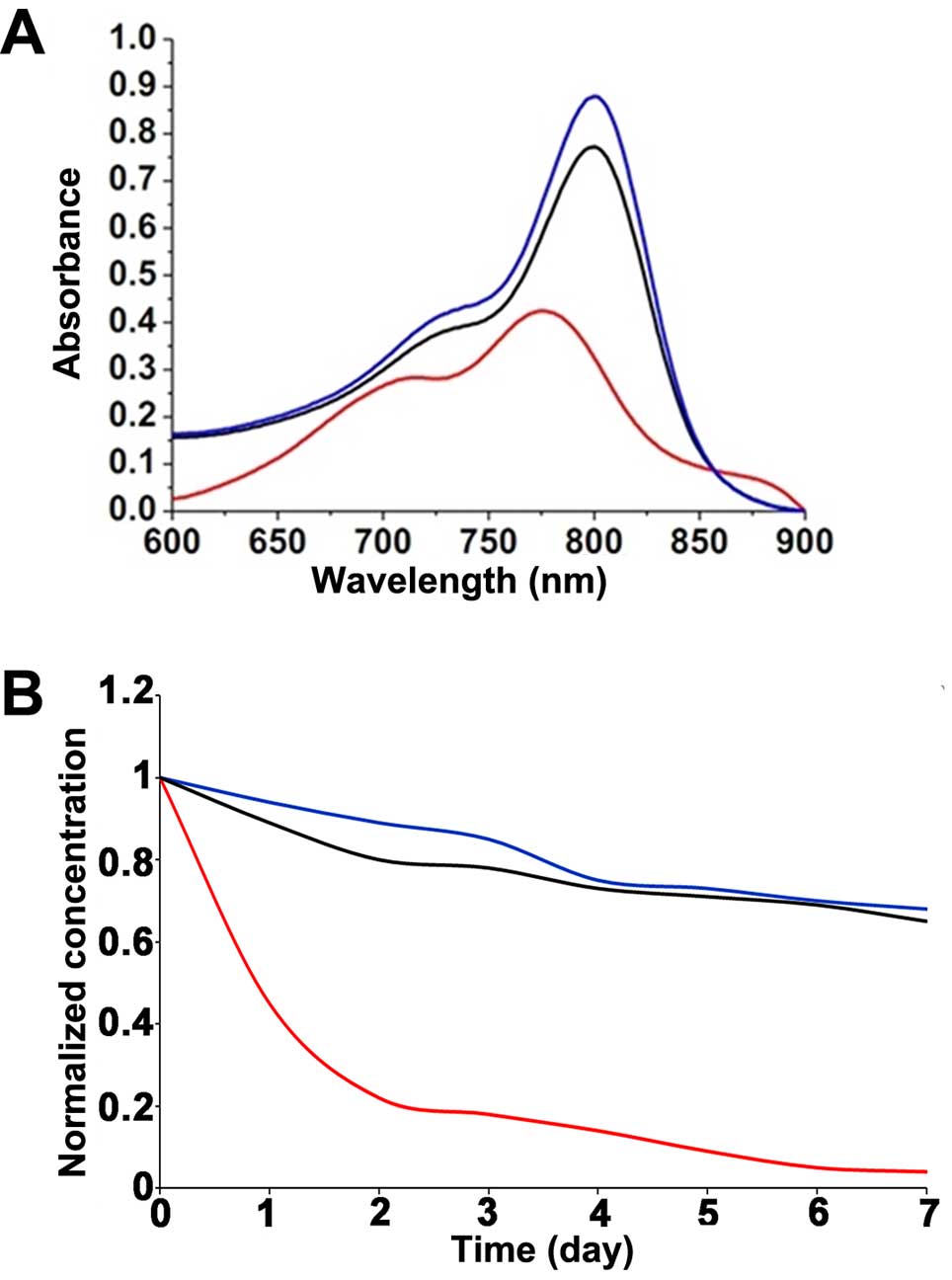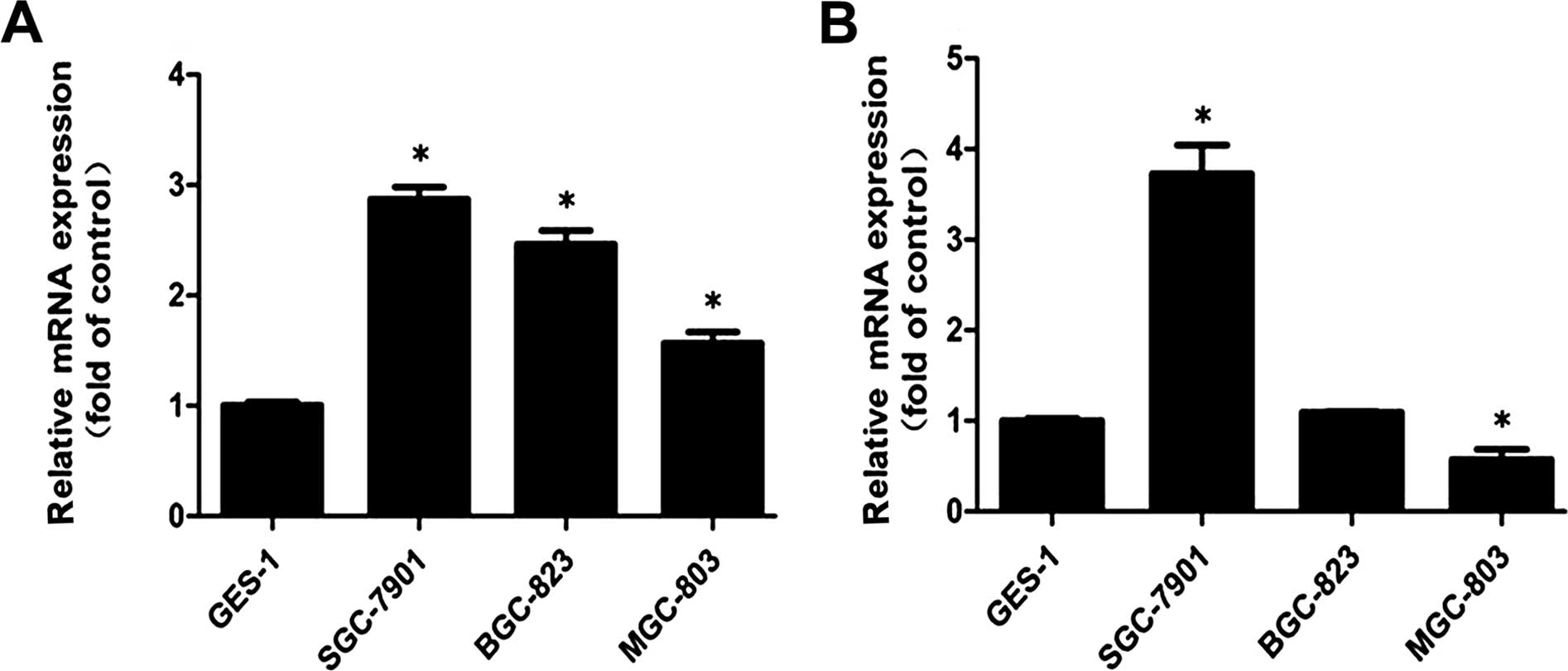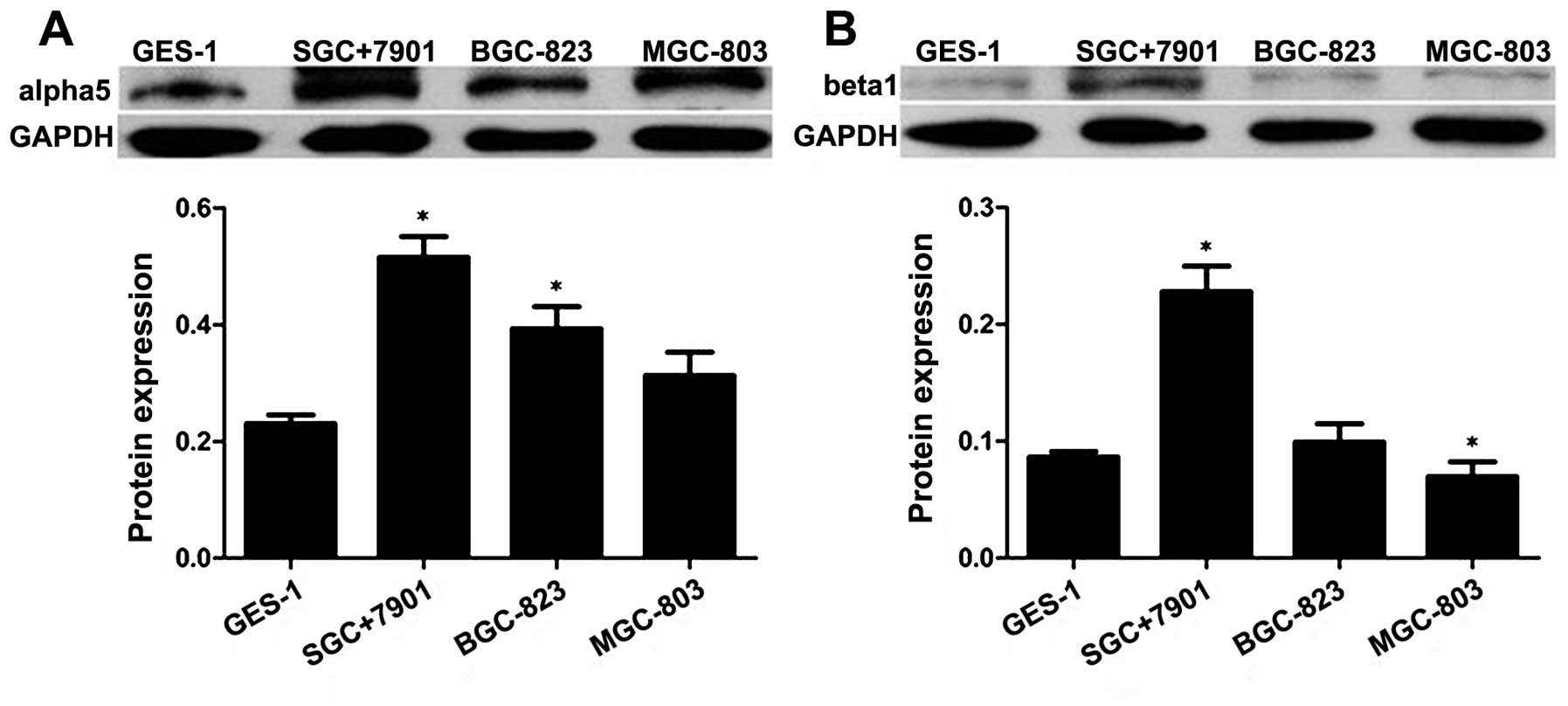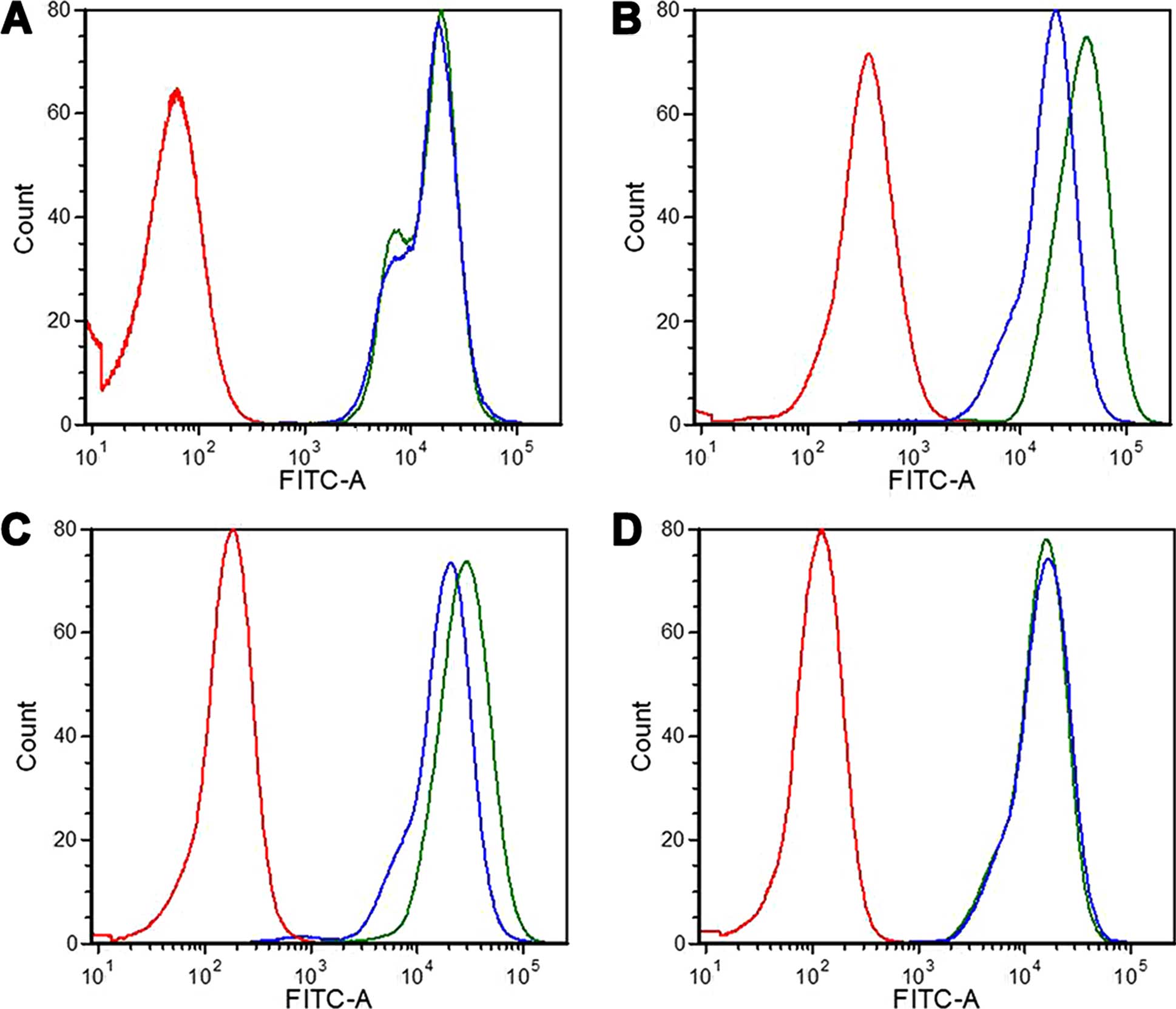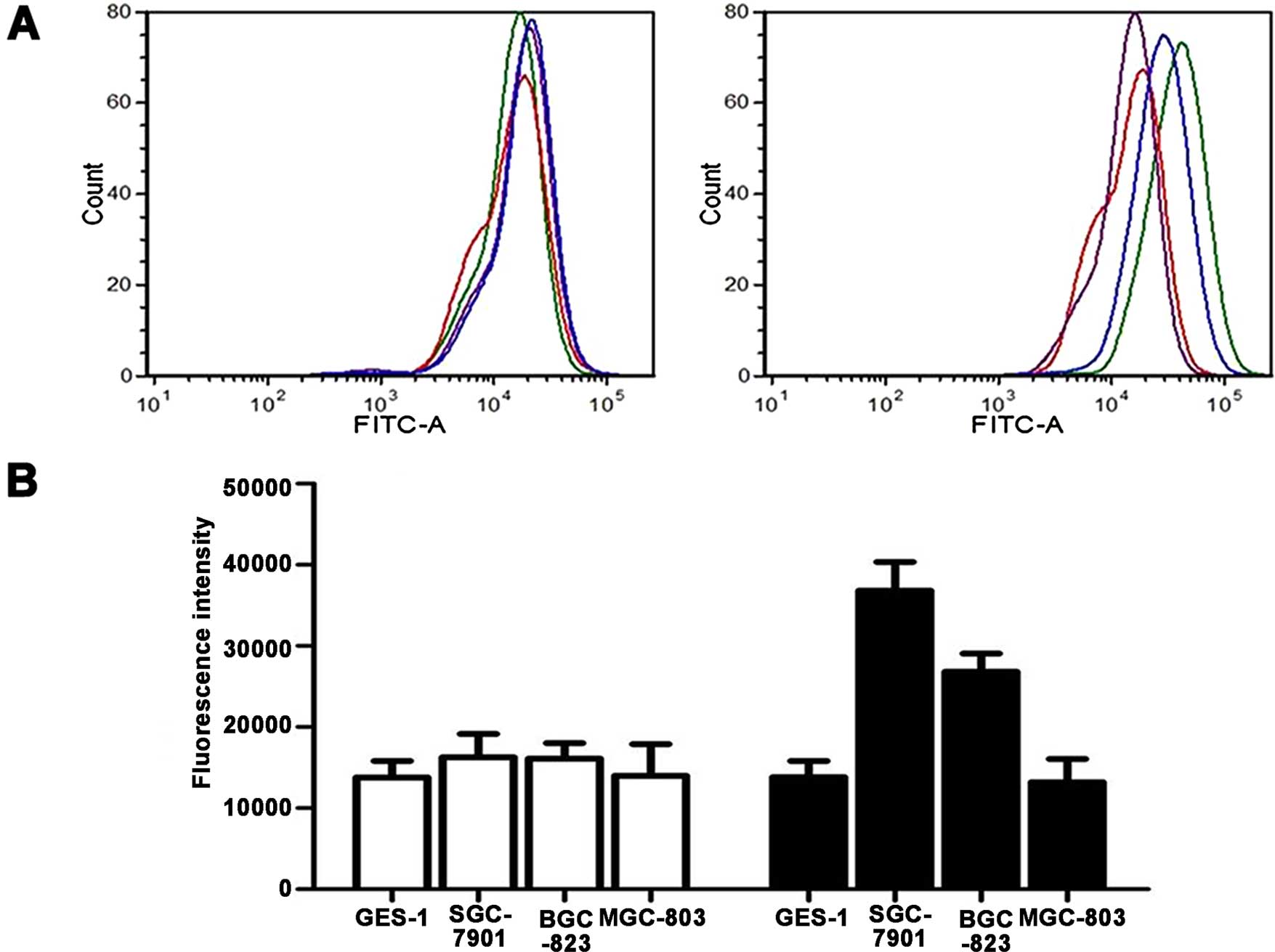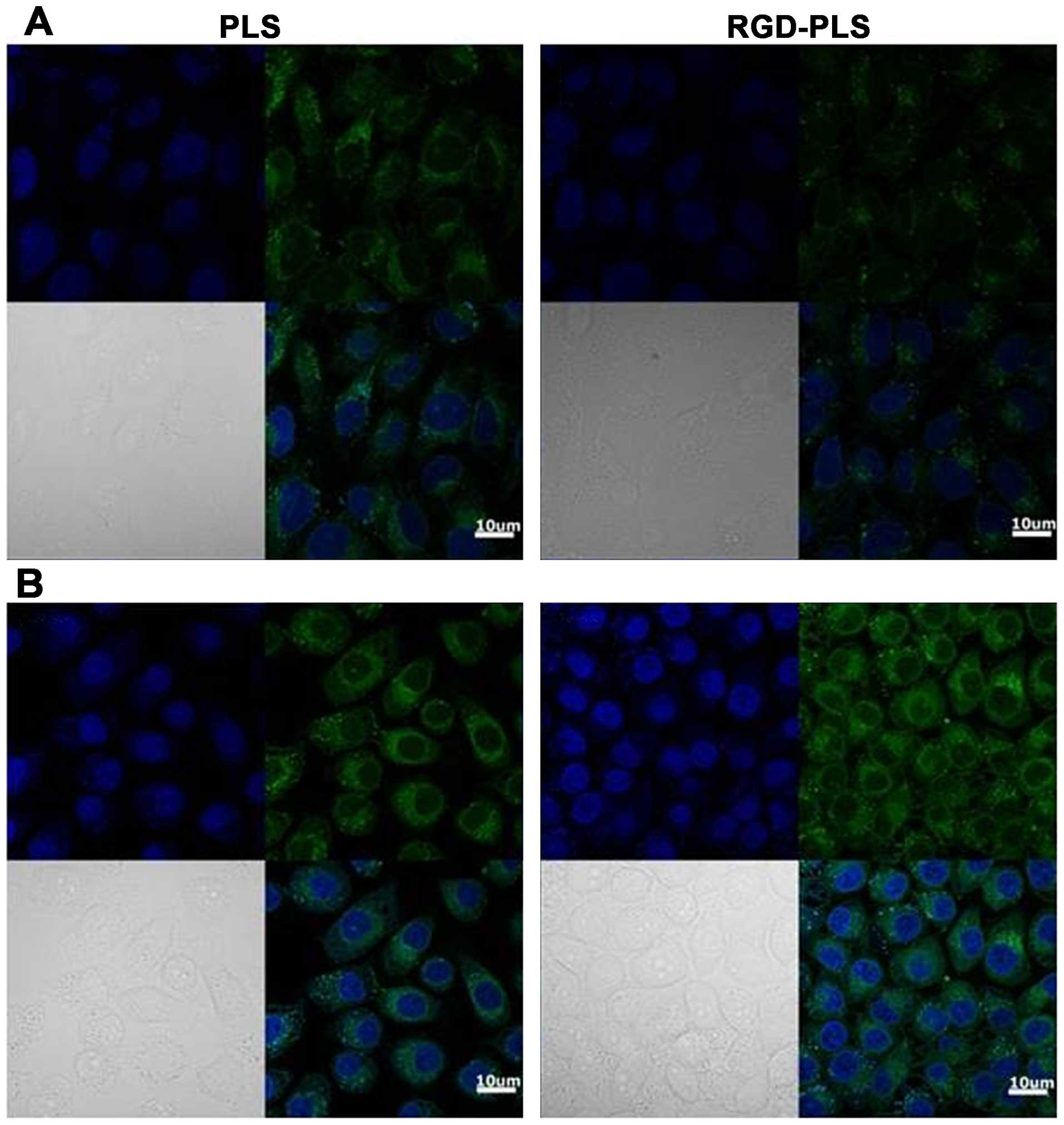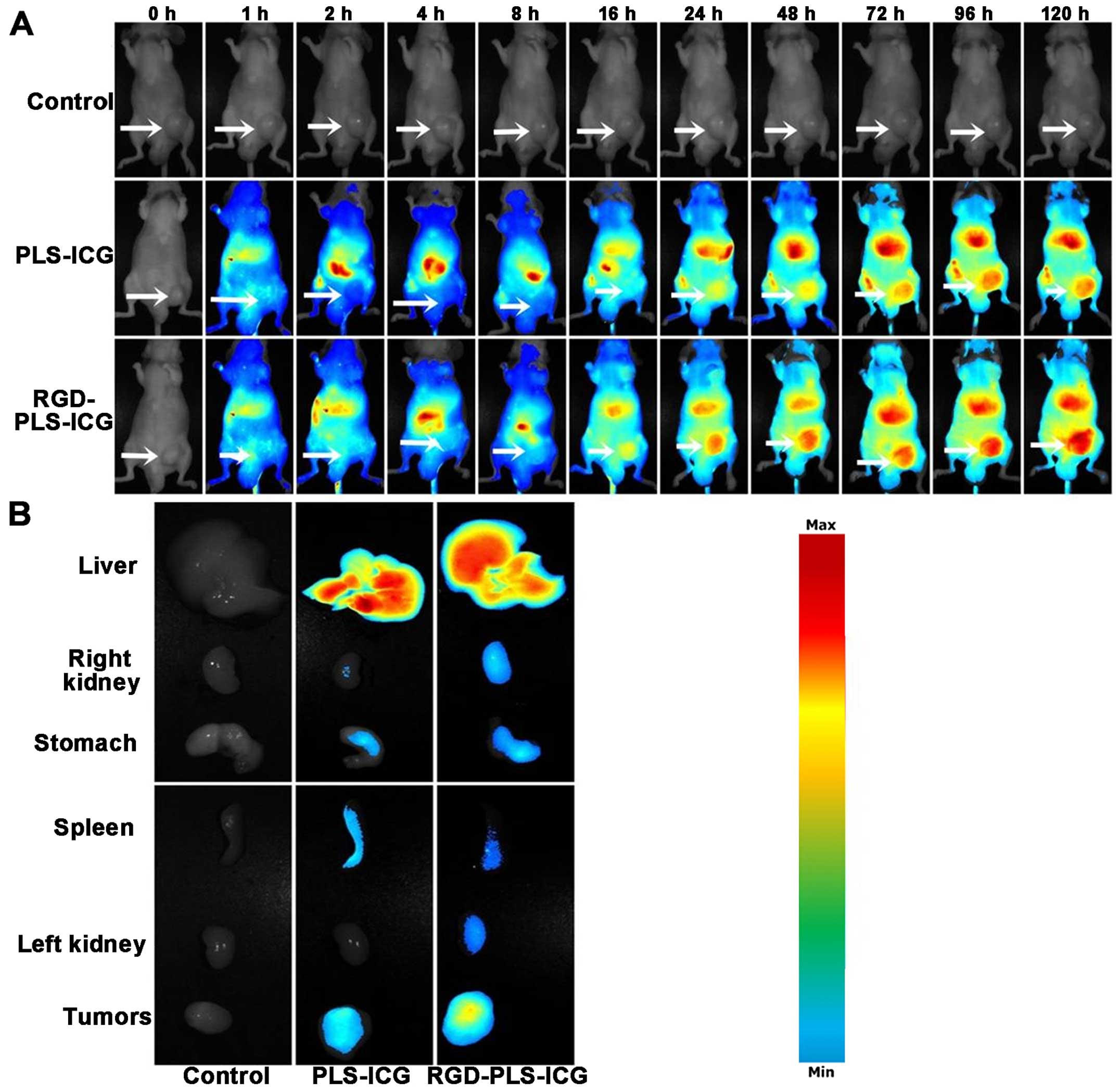|
1
|
Ferlay J, Shin HR, Bray F, Forman D,
Mathers C and Parkin DM: Estimates of worldwide burden of cancer in
2008: GLOBOCAN 2008. Int J Cancer. 127:2893–2917. 2010. View Article : Google Scholar
|
|
2
|
Dikken JL, van de Velde CJ, Coit DG, Shah
MA, Verheij M and Cats A: Treatment of resectable gastric cancer.
Therap Adv Gastroenterol. 5:49–69. 2012. View Article : Google Scholar : PubMed/NCBI
|
|
3
|
Ajani JA, Barthel JS, Bekaii-Saab T,
Bentrem DJ, D'Amico TA, Das P, Denlinger C, Fuchs CS, Gerdes H,
Hayman JA, et al: NCCN Gastric Cancer Panel: Gastric cancer. J Natl
Compr Canc Netw. 8:378–409. 2010.PubMed/NCBI
|
|
4
|
Okines A, Verheij M, Allum W, Cunningham D
and Cervantes A; ESMO Guidelines Working Group: Gastric cancer:
ESMO Clinical Practice Guidelines for diagnosis, treatment and
followup. Ann Oncol. 21(Suppl 5): v50–v54. 2010. View Article : Google Scholar
|
|
5
|
Songun I, Putter H, Kranenbarg EMK, Sasako
M and van de Velde CJH: Surgical treatment of gastric cancer:
15-year follow-up results of the randomised nationwide Dutch D1D2
trial. Lancet Oncol. 11:439–449. 2010. View Article : Google Scholar : PubMed/NCBI
|
|
6
|
Ruoslahti E: Integrins. J Clin Invest.
87:1–5. 1991. View Article : Google Scholar : PubMed/NCBI
|
|
7
|
Hynes RO: Integrins: Versatility,
modulation, and signaling in cell adhesion. Cell. 69:11–25. 1992.
View Article : Google Scholar : PubMed/NCBI
|
|
8
|
Aota S, Nomizu M and Yamada KM: The short
amino acid sequence Pro-His-Ser-Arg-Asn in human fibronectin
enhances cell-adhesive function. J Biol Chem. 269:24756–24761.
1994.PubMed/NCBI
|
|
9
|
Rajeswari J and Pande G: The significance
of alpha 5 beta 1 integrin dependent and independent actin
cytoskelton organization in cell transformation and survival. Cell
Biol Int. 26:1043–1055. 2002. View Article : Google Scholar : PubMed/NCBI
|
|
10
|
Toquet C, Colson A, Jarry A, Bezieau S,
Volteau C, Boisseau P, Merlin D, Laboisse CL and Mosnier JF: ADAM15
to α5β1 integrin switch in colon carcinoma cells: A late event in
cancer progression associated with tumor dedifferentiation and poor
prognosis. Int J Cancer. 130:278–287. 2012. View Article : Google Scholar
|
|
11
|
Nam JM, Onodera Y, Bissell MJ and Park CC:
Breast cancer cells in three-dimensional culture display an
enhanced radio-response after coordinate targeting of integrin
alpha5beta1 and fibronectin. Cancer Res. 70:5238–5248. 2010.
View Article : Google Scholar : PubMed/NCBI
|
|
12
|
Mitra AK, Sawada K, Tiwari P, Mui K, Gwin
K and Lengyel E: Ligand-independent activation of c-Met by
fibronectin and α5 β1-integrin regulates
ovarian cancer invasion and metastasis. Oncogene. 30:1566–1576.
2011. View Article : Google Scholar :
|
|
13
|
Chi F, Fu D, Zhang X, Lv Z and Wang Z:
Expression of the c-Met proto-oncogene and Integrin α5β1 in human
gastric cardia adenocarcinoma. Biosci Biotechnol Biochem.
76:1471–1476. 2012. View Article : Google Scholar
|
|
14
|
Ren J, Xu S, Guo D, Zhang J and Liu S:
Increased expression of α5β1-integrin is a prognostic marker for
patients with gastric cancer. Clin Transl Oncol. 16:668–674. 2014.
View Article : Google Scholar
|
|
15
|
Chen CH, Liu DZ, Fang HW, Liang HJ, Yang
TS and Lin SY: Evaluation of multi-target and single-target
liposomal drugs for the treatment of gastric cancer. Biosci
Biotechnol Biochem. 72:1586–1594. 2008. View Article : Google Scholar : PubMed/NCBI
|
|
16
|
Wang C, Bao C, Liang S, Fu H, Wang K, Deng
M, Liao Q and Cui D: RGD-conjugated silica-coated gold nanorods on
the surface of carbon nanotubes for targeted photoacoustic imaging
of gastric cancer. Nanoscale Res Lett. 9:2642014. View Article : Google Scholar : PubMed/NCBI
|
|
17
|
Kusano M, Tajima Y, Yamazaki K, Kato M,
Watanabe M and Miwa M: Sentinel node mapping guided by indocyanine
green fluorescence imaging: A new method for sentinel node
navigation surgery in gastrointestinal cancer. Dig Surg.
25:103–108. 2008. View Article : Google Scholar : PubMed/NCBI
|
|
18
|
Tajima Y, Murakami M, Yamazaki K, Masuda
Y, Kato M, Sato A, Goto S, Otsuka K, Kato T and Kusano M: Sentinel
node mapping guided by indocyanine green fluorescence imaging
during laparoscopic surgery in gastric cancer. Ann Surg Oncol.
17:1787–1793. 2010. View Article : Google Scholar : PubMed/NCBI
|
|
19
|
Bangham AD and Horne RW: Negative staining
of phospholipids and their structural modification by
surface-active agents as observed in the electron microscope. J Mol
Biol. 8:660–668. 1964. View Article : Google Scholar : PubMed/NCBI
|
|
20
|
Anders CK, Adamo B, Karginova O, Deal AM,
Rawal S, Darr D, Schorzman A, Santos C, Bash R, Kafri T, et al:
Pharmacokinetics and efficacy of PEGylated liposomal doxorubicin in
an intracranial model of breast cancer. PLoS One. 8:e613592013.
View Article : Google Scholar : PubMed/NCBI
|
|
21
|
Lin YY, Kao HW, Li JJ, Hwang JJ, Tseng YL,
Lin WJ, Lin MH, Ting G and Wang HE: Tumor burden talks in cancer
treatment with PEGylated liposomal drugs. PLoS One. 8:e630782013.
View Article : Google Scholar : PubMed/NCBI
|
|
22
|
Jiang J, Yang SJ, Wang JC, Yang LJ, Xu ZZ,
Yang T, Liu XY and Zhang Q: Sequential treatment of drug-resistant
tumors with RGD-modified liposomes containing siRNA or doxorubicin.
Eur J Pharm Biopharm. 76:170–178. 2010. View Article : Google Scholar : PubMed/NCBI
|
|
23
|
Yamamoto Y, Yoshida M, Sato M, Sato K,
Kikuchi S, Sugishita H, Kuwabara J, Matsuno Y, Kojima Y, Morimoto
M, et al: Feasibility of tailored, selective and effective
anticancer chemotherapy by direct injection of docetaxel-loaded
immunoliposomes into Her2/neu positive gastric tumor xenografts.
Int J Oncol. 38:33–39. 2011.
|
|
24
|
Sandanaraj BS, Gremlich HU, Kneuer R,
Dawson J and Wacha S: Fluorescent nanoprobes as a biomarker for
increased vascular permeability: Implications in diagnosis and
treatment of cancer and inflammation. Bioconjug Chem. 21:93–101.
2010. View Article : Google Scholar
|
|
25
|
Proulx ST, Luciani P, Derzsi S,
Rinderknecht M, Mumprecht V, Leroux JC and Detmar M: Quantitative
imaging of lymphatic function with liposomal indocyanine green.
Cancer Res. 70:7053–7062. 2010. View Article : Google Scholar : PubMed/NCBI
|
|
26
|
Duncan R and Sat YN: Tumour targeting by
enhanced permeability and retention (EPR) effect. Ann Oncol.
9(Suppl 2): 39, abs. 149. 1998. View Article : Google Scholar
|
|
27
|
Hope MJ, Bally MB, Webb G and Cullis PR:
Production of large unilamellar vesicles by a rapid extrusion
procedure: Characterization of size distribution, trapped volume
and ability to maintain a membrane potential. Biochim Biophys Acta.
812:55–65. 1985. View Article : Google Scholar : PubMed/NCBI
|
|
28
|
Kunishima M, Kawachi C, Hioki K, Terao R
and Tani S: Formation of carboxamides by direct condensation of
carboxylic acids and amines in alcohols using a new alcohol-and
water-soluble condensing agent: DMT-MM. Tetrahedron. 57:1551–1558.
2001. View Article : Google Scholar
|
|
29
|
Jeong HS, Lee CM, Cheong S-J, Kim EM,
Hwang H, Na KS, Lim ST, Sohn MH and Jeong HJ: The effect of
mannosylation of liposome-encapsulated indocyanine green on imaging
of sentinel lymph node. J Liposome Res. 23:291–297. 2013.
View Article : Google Scholar : PubMed/NCBI
|
|
30
|
Livak KJ and Schmittgen TD: Analysis of
relative gene expression data using real-time quantitative PCR and
the 2−ΔΔCT method. Methods. 25:402–408. 2001.
View Article : Google Scholar
|
|
31
|
Kao E, Shinohara M, Feng M, Lau MY and Ji
C: Human immunodeficiency virus protease inhibitors modulate
Ca2+ homeostasis and potentiate alcoholic stress and
injury in mice and primary mouse and human hepatocytes. Hepatology.
56:594–604. 2012. View Article : Google Scholar : PubMed/NCBI
|
|
32
|
Simard P and Leroux JC: pH-sensitive
immunoliposomes specific to the CD33 cell surface antigen of
leukemic cells. Int J Pharm. 381:86–96. 2009. View Article : Google Scholar : PubMed/NCBI
|
|
33
|
Mordon S, Devoisselle JM, Soulie-Begu S
and Desmettre T: Indocyanine green: Physicochemical factors
affecting its fluorescence in vivo. Microvasc Res. 55:146–152.
1998. View Article : Google Scholar : PubMed/NCBI
|
|
34
|
Desmettre T, Devoisselle JM, Soulie-Begu S
and Mordon S: Fluorescence properties and metabolic features of
indocyanine green (ICG). J Fr Ophtalmol. 22:1003–1016. 1999.In
French. PubMed/NCBI
|
|
35
|
Gulubova M and Vlaykova T:
Immunohistochemical assessment of fibronectin and tenascin and
their integrin receptors alpha-5beta1 and alpha9beta1 in gastric
and colorectal cancers with lymph node and liver metastases. Acta
Histochem. 108:25–35. 2006. View Article : Google Scholar
|
|
36
|
Albrecht M, Renneberg H, Wennemuth G,
Möschler O, Janssen M, Aumüller G and Konrad L: Fibronectin in
human prostatic cells in vivo and in vitro: Expression,
distribution, and pathological significance. Histochem Cell Biol.
112:51–61. 1999. View Article : Google Scholar : PubMed/NCBI
|
|
37
|
Kesanakurti D, Chetty C, Dinh DH, Gujrati
M and Rao JS: Role of MMP-2 in the regulation of IL-6/Stat3
survival signaling via interaction with α5β1 integrin in glioma.
Oncogene. 32:327–340. 2013. View Article : Google Scholar
|
|
38
|
Gahmberg CG, Fagerholm SC, Nurmi SM,
Chavakis T, Marchesan S and Grönholm M: Regulation of integrin
activity and signalling. Biochim Biophys Acta. 1790:431–444. 2009.
View Article : Google Scholar : PubMed/NCBI
|
|
39
|
Frangioni JV: In vivo near-infrared
fluorescence imaging. Curr Opin Chem Biol. 7:626–634. 2003.
View Article : Google Scholar : PubMed/NCBI
|
|
40
|
Unno N, Nishiyama M, Suzuki M, Yamamoto N,
Inuzuka K, Sagara D, Tanaka H and Konno H: Quantitative lymph
imaging for assessment of lymph function using indocyanine green
fluorescence lymphography. Eur J Vasc Endovasc Surg. 36:230–236.
2008. View Article : Google Scholar : PubMed/NCBI
|
|
41
|
Saxena V, Sadoqi M and Shao J: Indocyanine
green-loaded biodegradable nanoparticles: Preparation,
physicochemical characterization and in vitro release. Int J Pharm.
278:293–301. 2004. View Article : Google Scholar : PubMed/NCBI
|
|
42
|
Ohnishi S, Lomnes SJ, Laurence RG,
Gogbashian A, Mariani G and Frangioni JV: Organic alternatives to
quantum dots for intraoperative near-infrared fluorescent sentinel
lymph node mapping. Mol Imaging. 4:172–181. 2005.PubMed/NCBI
|
|
43
|
Gao J, Zhong W, He J, Li H, Zhang H, Zhou
G, Li B, Lu Y, Zou H, Kou G, et al: Tumor-targeted PE38KDEL
delivery via PEGylated anti-HER2 immunoliposomes. Int J Pharm.
374:145–152. 2009. View Article : Google Scholar : PubMed/NCBI
|
|
44
|
Couvreur P and Puisieux F: Nanoparticles
and microparticles for the delivery of polypeptides and proteins.
Adv Drug Deliv Rev. 10:141–162. 1993. View Article : Google Scholar
|
|
45
|
Xie H, Zhu Y, Jiang W, Zhou Q, Yang H, Gu
N, Zhang Y, Xu H, Xu H and Yang X: Lactoferrin-conjugated
superparamagnetic iron oxide nanoparticles as a specific MRI
contrast agent for detection of brain glioma in vivo. Biomaterials.
32:495–502. 2011. View Article : Google Scholar
|
|
46
|
Allen TM and Cullis PR: Drug delivery
systems: Entering the mainstream. Science. 303:1818–1822. 2004.
View Article : Google Scholar : PubMed/NCBI
|















